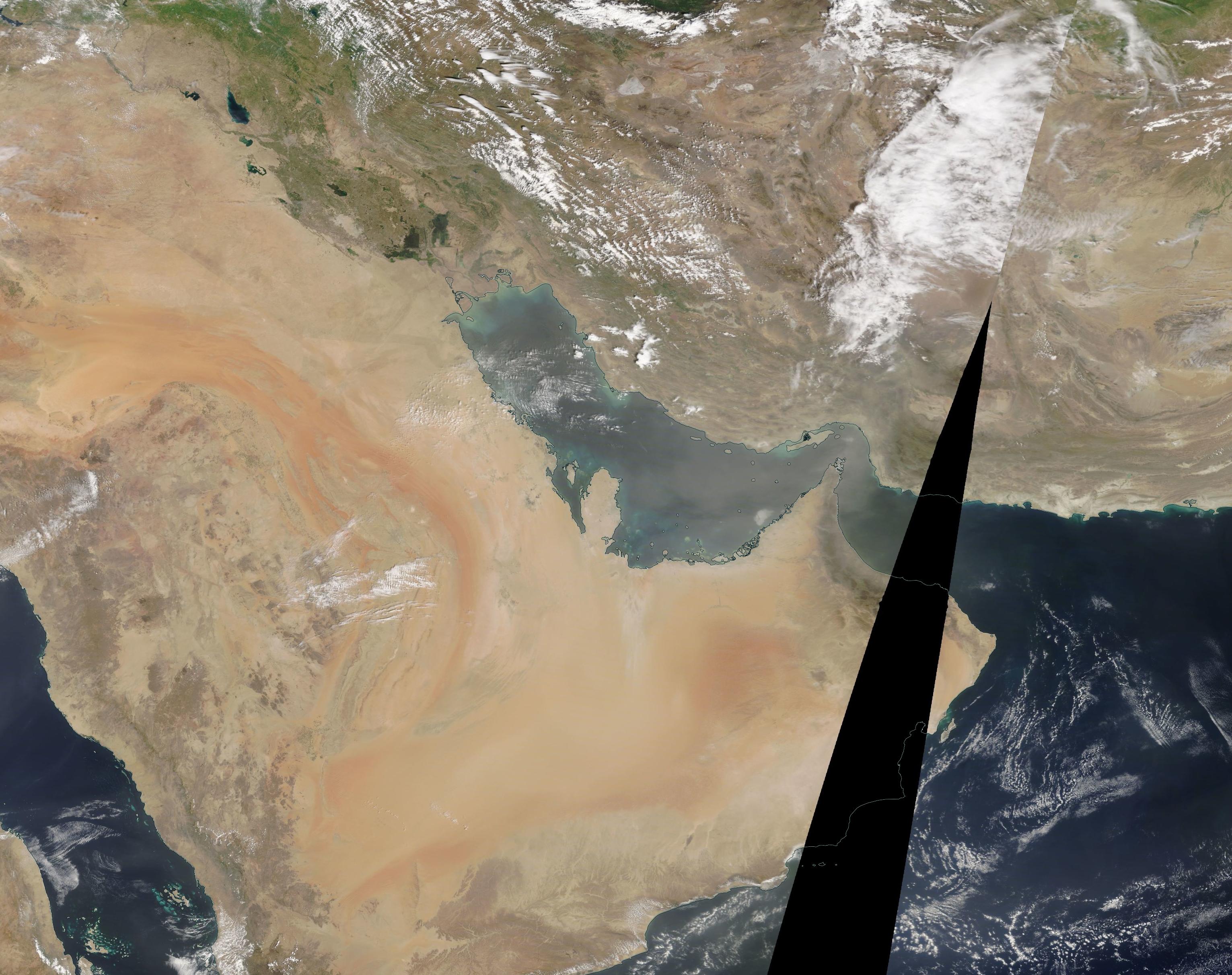
Khalifa University and the Environment Agency Abu Dhabi found that reduced human-caused air pollution during the Covid-19 lockdown was accompanied by increased surface-level winds, resulting in higher concentrations of dust and particulate matter.
Research has shown that the global lockdowns seen during the start of the Covid-19 pandemic had a significant impact on the climate of several regions around the world by improving air quality. However, some regions actually saw increases in particulate matter in the atmosphere, as a result of a dustier than expected air.
Dr. Diana Francis, Head of the Environmental and Geophysical Sciences Lab (ENGEOS), Dr. Ricardo Fonseca, Research Scientist, and Dr. Narendra Nelli, Postdoctoral Fellow, along with Oriol Teixido, Ruqaya Mohamed and Dr. Richard Perry from the Environment Agency Abu Dhabi, investigated the increased dust activity over the Arabian Peninsula in combination with an increase in wind speed during the Covid-19 lockdown period in 2020. They found that while anthropogenic emissions were reduced, particulate matter concentrations from natural sources increased. Their results were published in Aeolian Research.
The main winds driving dust emissions over the Arabian Peninsula are known as Shamal winds. They result from an East-West pressure dipole with a low over the Indo-Pakistani subcontinent and a high over northern Africa. During the lockdown, emissions reduction over the Indian subcontinent resulted in a deeper low pressure, which caused an increase in Shamal winds over the Arabian Peninsula leading to more dust emissions and higher concentrations of particulate matter over the UAE and surrounding countries.
The policies aimed at restricting mobility and promoting social distancing in an attempt to control the spread of the virus also impacted atmospheric and oceanic conditions through changes in human-caused emissions of pollutants. The global Covid-19 lockdowns resulted in a reduction of transportation and closure of industrial facilities closures during a two month period, which resulted in a seven percent drop in global carbon dioxide emissions from human activity.
At the lockdown peak in April 2020, regions responsible for around 90 percent of global CO2 emissions were under some level of confinement. The resultant drop in emissions led to a reduction of the mean sea surface temperatures (SSTs) of 0.5 degrees Celsius in most coastal areas, with the SSTs in the north Indian Ocean decreasing by about 5 percent. The cleaner air also led to lower night-time land surface and air temperatures, with urban areas experiencing a more pronounced reduction than rural ones. During the daytime, on the other hand, the surface and air above were warmer due to less scattering and absorption of the incoming UV radiation from the sun.
In more polluted environments, like in the four major cities of India (Delhi, Kolkata, Mumbai and Chennai), the impact was even more dramatic with the monthly mean temperature dropping by up to 3 degrees Celsius.
As temperatures varied, near-surface wind speeds were also affected, as winds are a response to local-scale pressure and temperature gradients.
In the UAE, reduced emissions led to a 40 percent decrease in the concentration of pollutants such as nitrogen dioxide, sulfuric dioxide, and carbon monoxide, compared to pre-lockdown levels. However, the particulate matter concentrations increased by up to 45 percent.
“This was unexpected,” Dr. Francis said. “Published works reported a general reduction in particulate matter during the lockdown period, owing to lower emissions and changes in precipitation. However, some cities in Europe and China saw an increase in particulate matter in the atmosphere due to long-range transport of dust. In fact, in Morocco, the decrease in local emissions was offset by long-range transported aerosols from non-local emissions. It is important to understand the impact of the large-scale circulation on dust activity over the Arabian Peninsula and its effects on air quality throughout the lockdown period given that the region is one of the largest sources of mineral dust on Earth with mineral dust potentially accounting for more than 40 percent of the particulate matter levels.”
The researchers found that while there was a reduction in anthropogenic, or human caused, emissions in the Arabian Peninsula during the lockdown period, the particulate matter concentrations actually increased due to higher dust loadings. This was due to the increased Shamal winds that caused more dust aerosols to be picked up from dust sources in the Arabian Peninsula and then transported across the region and beyond.
Compared to the four years prior to 2020, the dust loading in 2020 was higher over the majority of the eastern Arabian Peninsula, with hotspots in Kuwait, Iraq, and neighboring Saudi Arabia.” Dr. Francis said.
Dust aerosols are the main contributor to particulate matter concentrations and long-range transport of aerosols can explain aerosol increases in regions further from loading areas. The peaks in dust loading go hand in hand with the peaks in particulate matter, according to the researchers, as the increased dust emission was driven by high near-surface winds in response to the change in temperature and pressure gradients.
“While the reduction in the concentration of pollutants, such as carbon monoxide, has been widely reported, in the vast majority of published studies the particulate matter in several regions around the world also decreased,” Dr. Francis said.
“Over the eastern Arabian Peninsula, however, it actually increased due to more active wind flow. This highlights the complex nature of dust emissions and its relationship to anthropogenic and natural effects. Having less man-made pollutants does not necessarily mean having a cleaner environment. It is essential that dust aerosols and their feedback on the regional climate should be considered when establishing national and regional strategies for anthropogenic emission reduction.”
Jade Sterling
Science Writer
26 April 2022






